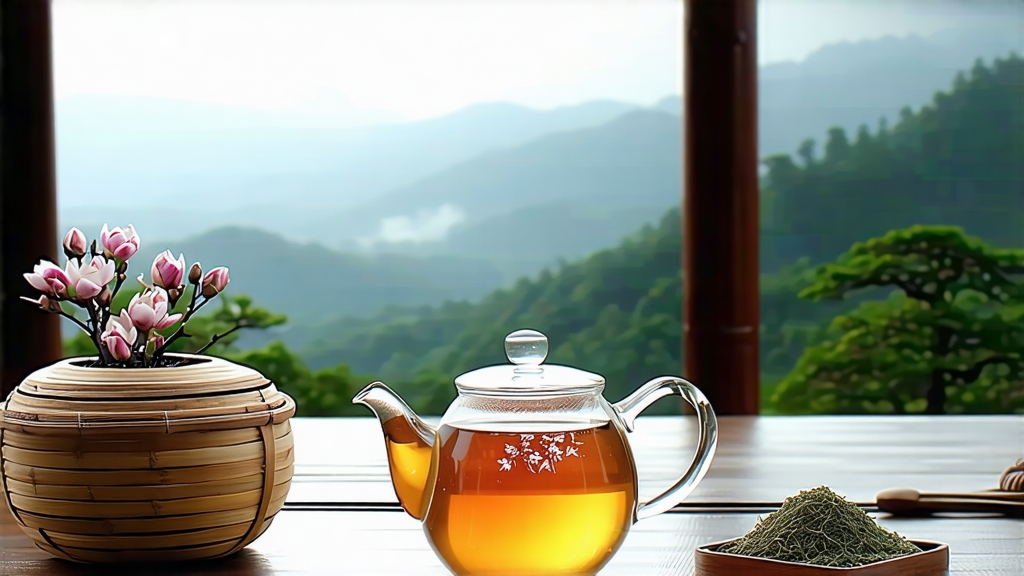
When Europeans first encountered Chinese white tea in the early 17th century, they christened it “silver tips” and traded it like perfume; what they held were actually the unopened buds of Bai Hao Yin Zhen—Silver Needle—the most luminous expression of the white tea family. Today, guarded by the Min-Zhe mountain chain and the warm, mineral-rich sands of Fujian’s northeast coast, Silver Needle remains the only white tea made exclusively from single buds, plucked for only a few spring mornings when the dew still tastes of winter. To understand China’s tea cosmology, one must begin with this quiet, almost translucent arrow of flavor that predates oolong, red, and even most green teas in the imperial record.
Historical whispers place Silver Needle’s birth during the Song dynasty’s Jianlong era (960–970 CE), when compressed “dragon cake” teas were tribute. Yet the loose, fluffy buds we recognize appeared much later, reputedly perfected in 1796 by tea monks in Taimu Mountain who sought a tea that could age like rice wine. By the Guangxu reign (1875–1908), Fuding county had standardized the plucking rule: “no leaf, no stem, no rain, no dew-dry”—a discipline still carved on weather-worn wooden boards at the entry of Qinyang village.
Botanically, Silver Needle is the apical bud of Fuding Da Bai Hao, a large-white-haired cultivar whose down can reach 9 mm in length, reflecting sunlight like frost. Within that microscopic fuzz lies a high ratio of catechins to chlorophyll, explaining both the tea’s pale liquor and its propensity for slow, honeyed maturation. A single kilo demands roughly 38,000 buds, all picked before the Qingming festival when the amino acid L-theanine peaks, gifting the infusion its signature brothy sweetness nicknamed “umami cloud.”
Craft begins the moment a bud leaves the bush. No frying, rolling, or roasting interrupts the enzymatic breath of the leaf; instead, the buds are laid upon bamboo trays stacked like organ pipes in a sun-warmed corridor. For 36 to 48 hours they wither, losing about 70 % moisture while polyphenol oxidase nibbles at the edges of greenness, turning harsh catechins into softer theaflavins. Master witherers “read the wind,” shifting trays to follow the attic’s micro-breeze, then finish the tea with a 15-minute “soft bake” at 40 °C, just enough to set the hygroscopic down without caramelizing sugars. The result is a feather-light stick that feels cooler than room temperature—the tactile signature of properly dried Silver Needle.
Unlike green teas that fade within a year, Silver Needle is deliberately built for slumber. Stored below 25 °C and 60 % humidity, the buds continue a non-enzymatic browning similar to white wine aging sur lie. After five years the liquor turns from platinum to deep topaz, and aromas migrate from cucumber skin toward marzipan, dried longan, and finally camphor. A 2018 study by the Fujian Academy of Agricultural Sciences showed that 15-year-aged Silver Needle developed rare 2-acetyl-1-pyrroline, the same “popcorn” note found in basmati rice, proving that time itself is an ingredient.
To brew Silver Needle respectfully, one must unlearn the violence of boiling water. Start with 4 g of buds—about two bamboo scoops—for every 120 ml of vessel. Use water rested for three minutes after boil, landing near 85 °C; hotter temperatures extract tannins that mask the tea’s orchid whisper. A gaiwan of thin porcelain acts like a lens, magnifying the downy dance: buds stand upright for 30 seconds, then slowly sink like snowflakes. The first infusion, 45 seconds, releases a pale cordial reminiscent of honeydew and fresh pea tendrils. Second infusion at 50 seconds deepens into white peach with a mineral snap of wet slate. By the fifth, an unexpected creaminess emerges, almost like rice milk, because the trichomes finally rupture under gentle hydration. Silver Needle is one of the few teas that rewards grandpa-style brewing: buds left in a tall glass throughout the workday, evolving from dawn’s brightness to dusk’s malt without ever turning bitter.
Professional